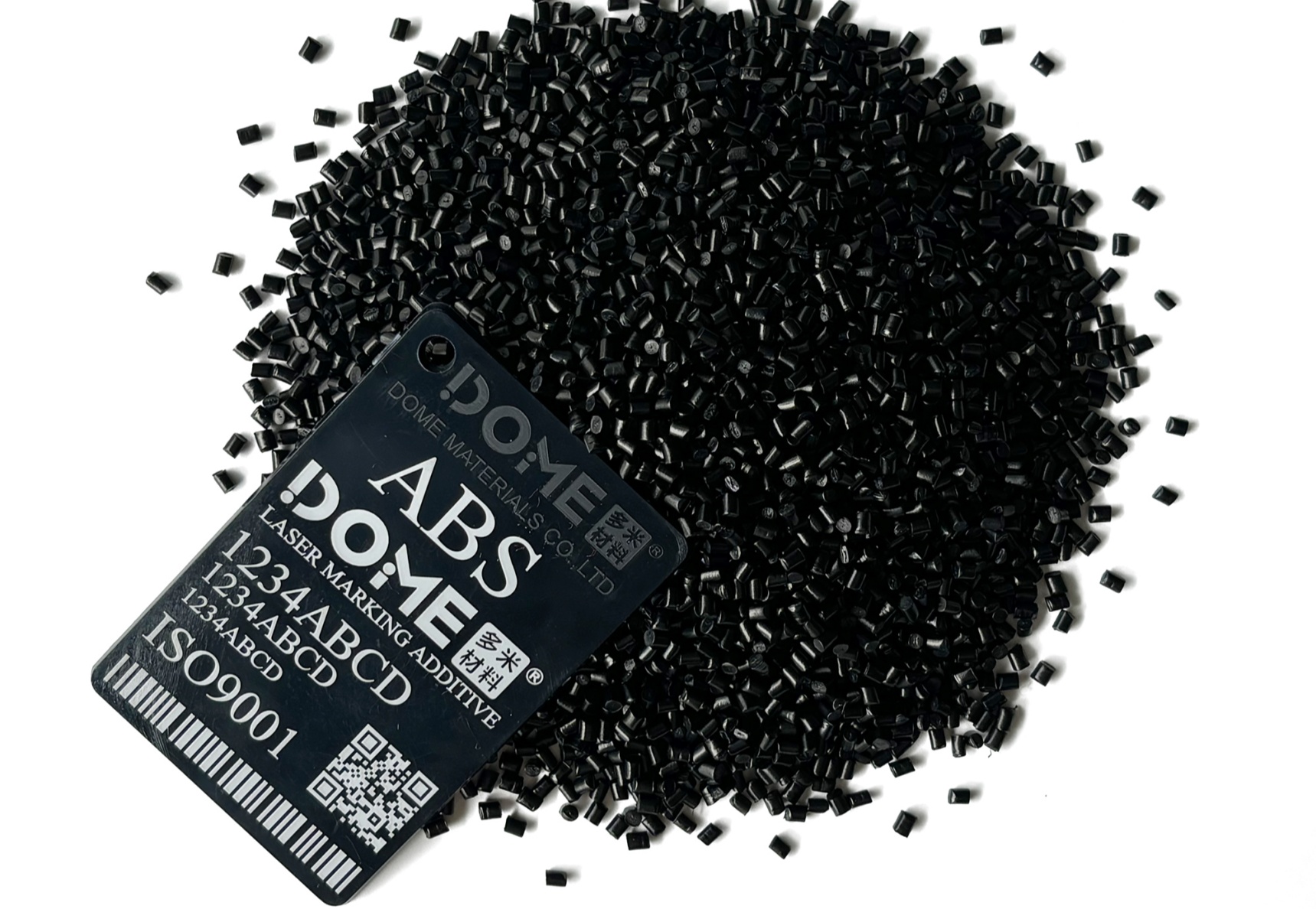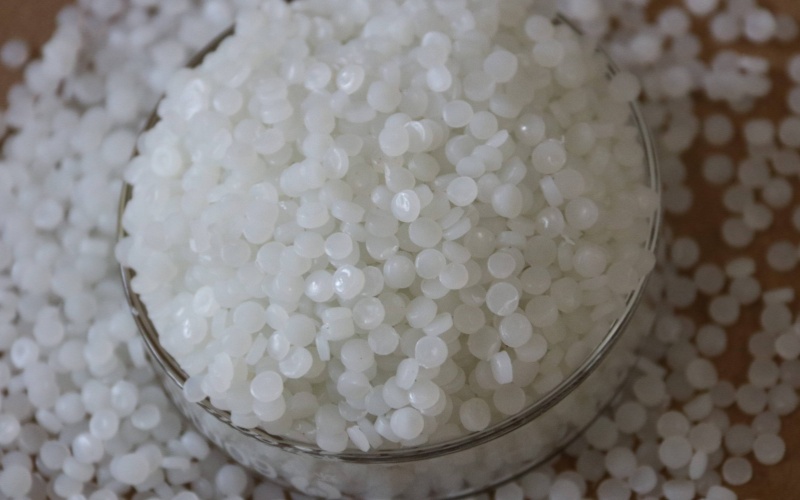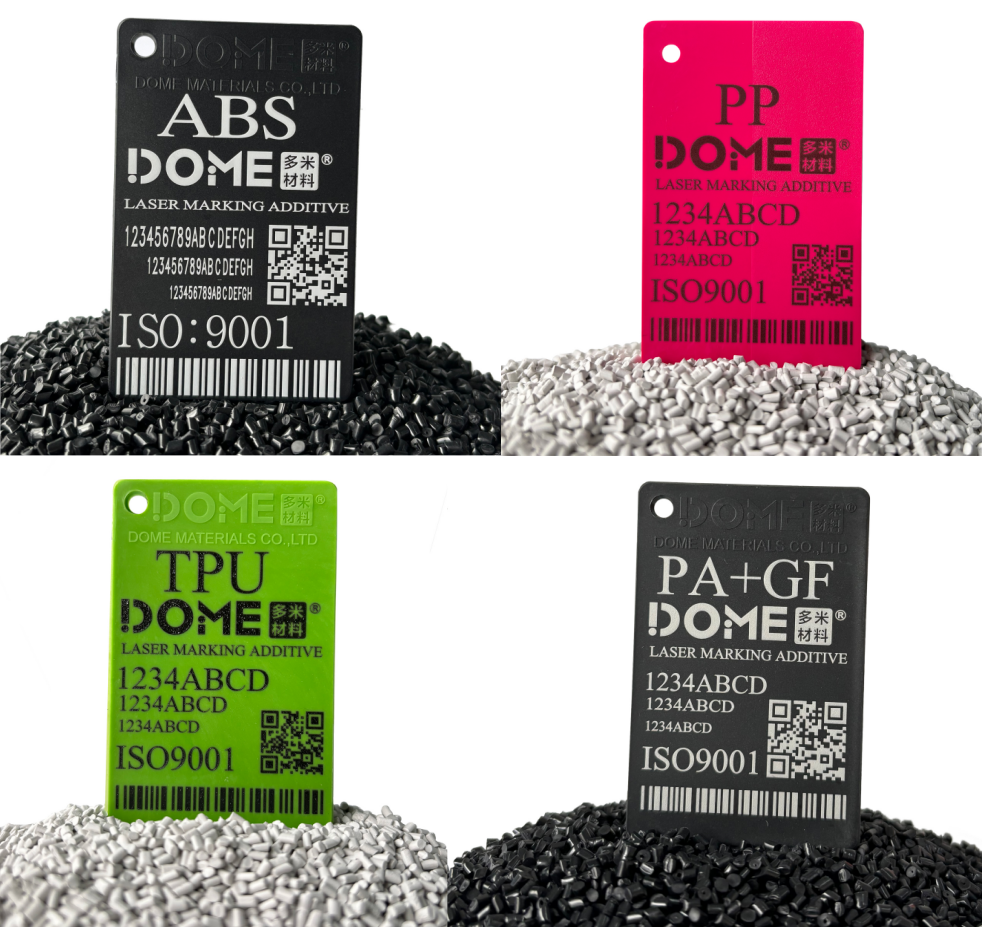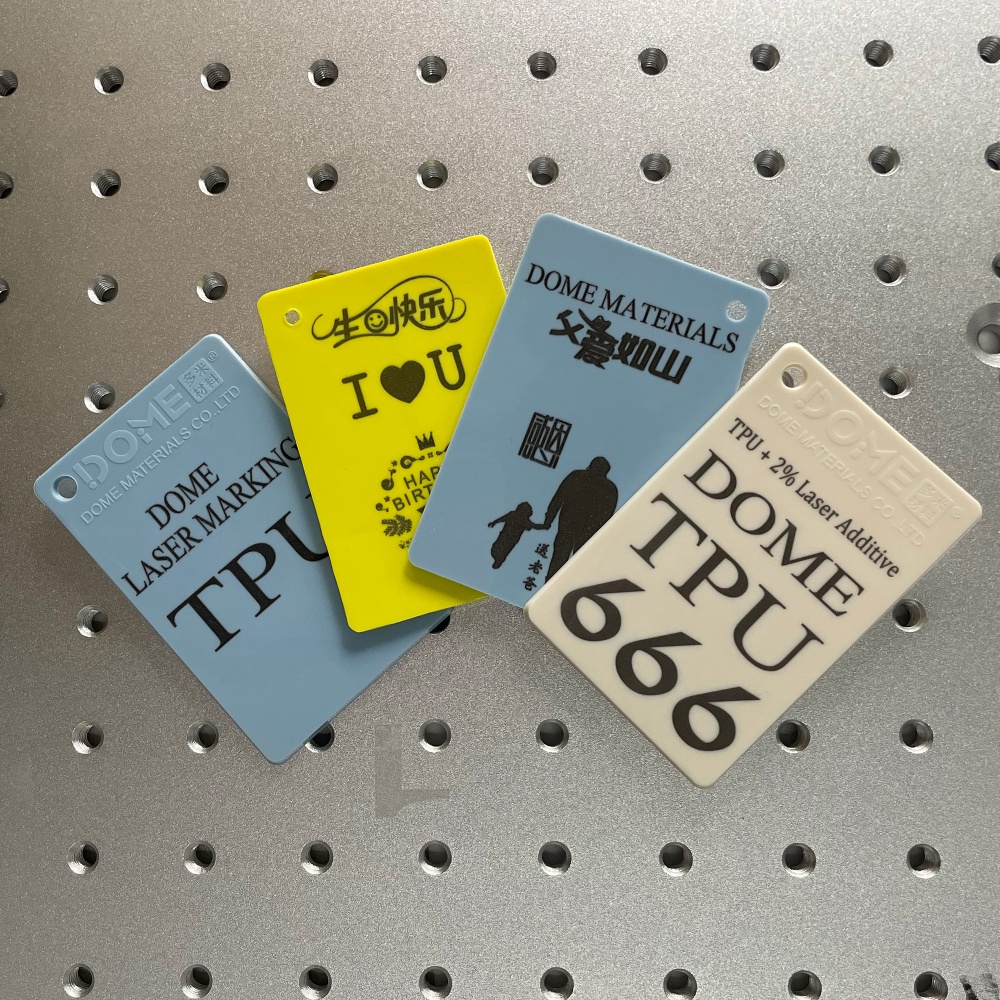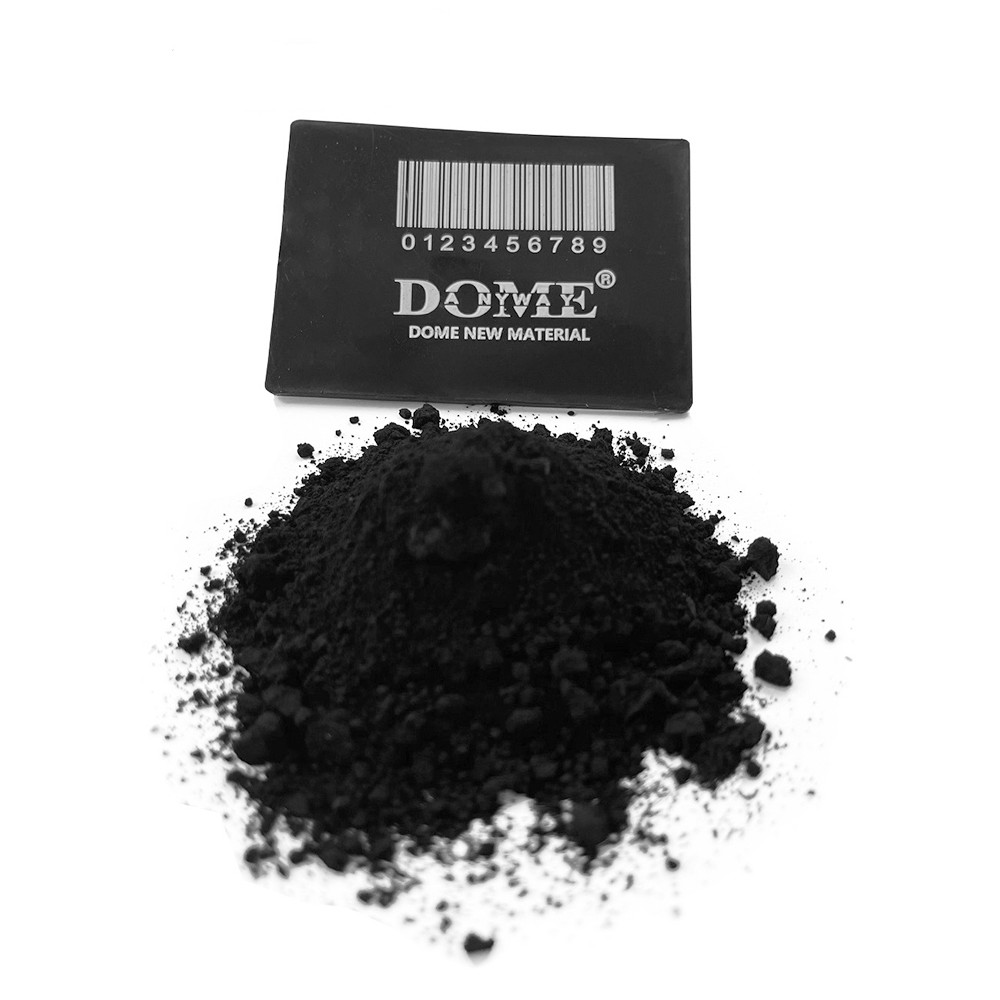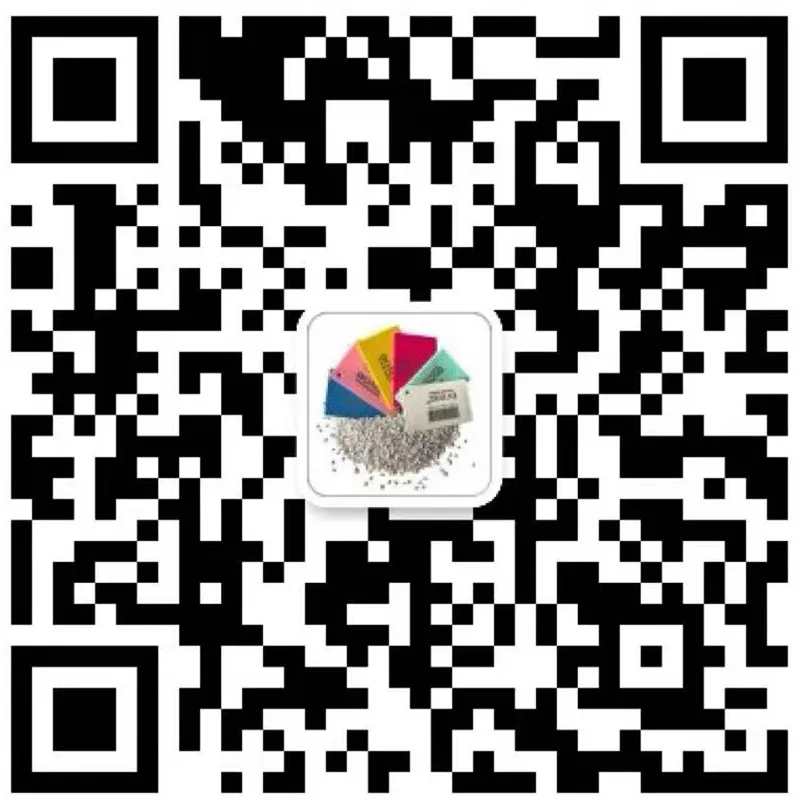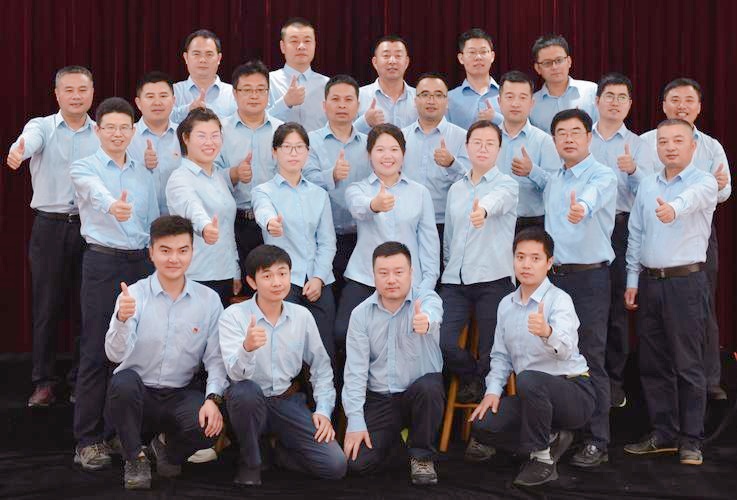In the field of laser marking, achieving high-contrast white marks on black plastics (known as “black-to-white” marking) has long been a technical challenge—especially when working with ABS materials. Many manufacturers frequently encounter issues such as impure white marks, low contrast, and poor scratch resistance during practical operations. This article combines cutting-edge industry experience to provide a deep analysis of optimization solutions for black-to-white laser marking on ABS, covering material selection, formulation design, and laser marking powder usage, revealing the technical logic behind successful “black-to-white” marking.
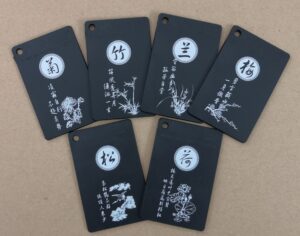
1. Why Is It Difficult to Achieve “Black-to-White” Marking on Regular ABS?
Regular ABS (Acrylonitrile-Butadiene-Styrene copolymer) is naturally unsuitable for black-to-white marking due to two core issues:
1.1 Excessive Carbon Black Content
Regular black ABS typically contains a high amount of carbon black as a colorant. Carbon black has an extremely strong absorption capacity for lasers (e.g., 1064nm fiber lasers), causing laser energy to be quickly consumed by the surface layer. This prevents the energy from penetrating deep into the material to trigger a foaming reaction, making it difficult to form white marks.
1.2 Interference from Flame Retardants
If ABS contains halogenated or halogen-free flame retardants (such as phosphate esters), their thermal decomposition behavior inhibits the laser foaming process. This leads to yellowed or grayed marks, and in some cases, even complete failure to develop color.
2. The Solution: Synergistic Effect of Transparent ABS + PMMA + Laser Marking Additive
To overcome the limitations of regular ABS, a material replacement strategy centered on transparent ABS and PMMA (Polymethyl Methacrylate) is key.
2.1 Core Material Replacement: Transparent ABS
- Transparent ABS (e.g., Toray Toyolac 920, LG Chem TR557) has a transparent or semi-transparent matrix and contains almost no carbon black. This allows lasers to penetrate the surface layer and activate internal foaming agents to form a microcellular structure, which reflects light to produce a white appearance.
2.2 Key Materials: PMMA
The introduction of PMMA serves two critical purposes:
- Enhanced Laser Sensitivity: PMMA easily decomposes to generate gas under laser irradiation, promoting foaming.
- Improved Mark Contrast: The difference in refractive index between PMMA and ABS amplifies the visual effect of white marks.
2.3 Critical Role of Laser Marking Additives
Laser marking additives are pivotal in optimizing black-to-white ABS marking. They boost contrast by refining bubble distribution—ensuring uniform light reflection for a brighter, whiter finish.
Additionally, these additives enhance laser energy absorption efficiency, reducing required marking time and boosting overall process productivity.
2.4 Recommended Formulation Ratios of the Basic Raw Materials
| Material Type | Basic Formulation | High-Contrast Formulation |
|---|---|---|
| Transparent ABS | 80% | 50% |
| PMMA | 20% | 50% |
| Mark Effect | Clear White | Pure Bright White |
2.4 The Optimized Laser Marking Result with DOME Materials Laser Marking Masterbatch DM-GB0051
| Product Name | Black Laser-Activated Additive Masterbatch for White Marking on Black Polymer |
| Model No. | DM-GB0051 |
| Resin Compatibility | ABS |
| Dosage | 1-1.5% |
| Carrier | ABS |
| Laser Type | Fiber Laser/UV Laser |
| Color | Black |
| Apperiance | Granule 2.5-3.0mm |
| Processing Temperature | > 180 °C |
| Drying Temperature | < 90 °C |
| Melt Flowing Rate | 10.0-25.0 (g/10min. 190℃, 5KG) |
| Density(g/cm³) | 8-10g/cm³ |
| Bulk Density(g/cm³) | 90-110g/100ml |
| Heat Stability | Stable up to 280 °C |
| PH Value | 7-11 |
| Certification | ISO9001 MSDS |
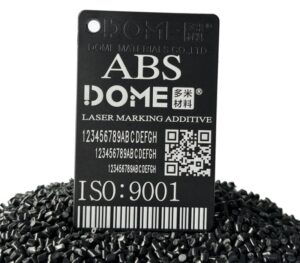
3. Scratch Resistance Upgrade: Ternary System with PBT
For products requiring scratch resistance testing (e.g., Volkswagen standard PV3952), PBT (Polybutylene Terephthalate) must be incorporated into the formulation:
- Role of PBT: Forms a surface microcrystalline structure, improving hardness and wear resistance.
- Optimized Formulation:
70% Transparent ABS + 20% PMMA + 10% PBT(Note: A PBT ratio exceeding 15% will cause laser energy dispersion, resulting in faded marks.)
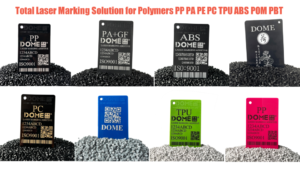
4. Laser Marking Additive: The “Soul Catalyst” for Black-to-White Marking
Even with a transparent ABS + PMMA system, a specialized laser marking additive is still required to stably achieve black-to-white marking. Below are key considerations:
4.1 Warning: Avoid Regular Black Masterbatches
Carbon black in black masterbatches completely negates the effect of laser marking powder. Any black pigments must be strictly excluded from the formulation.
4.2 Synergistic Dual Laser Marking Powder Solution
| Laser Marking Powder Type | Addition Amount | Functional Positioning |
|---|---|---|
| Black Laser Marking Pigment | 0.1% | Absorbs laser energy to trigger deep foaming |
| Purple Laser Marking Pigment | 0.05% | Regulates bubble size and prevents edge yellowing |
- Compound Principle: Black powder provides energy anchor points, while purple powder optimizes bubble uniformity. Both require weighing accuracy precise to 0.01% to ensure consistent performance.
5. Process Parameters: The “Invisible Killers” Beyond Materials
Even with a perfect material formulation, the following process parameters significantly impact marking quality. Improper settings can ruin otherwise ideal results.
| Parameter | Recommended Range | Failure Case Example |
|---|---|---|
| Laser Power | 8-12W (Fiber Laser) | Power >15W causes bubble rupture and yellowing |
| Marking Speed | 800-1200mm/s | Speed <500mm/s leads to material carbonization |
| Filling Interval | 0.04-0.06mm | Interval >0.1mm results in grid-like traces |
| Defocus Amount | +1~+2mm | Negative defocus causes blurry marks |
6. Full-Process Quality Control Checklist
To ensure stable and high-quality black-to-white marking, a strict quality control process must be implemented across all stages:
-
Raw Material Inspection:
- Transparent ABS must have a light transmittance >85% (tested per ASTM D1003).
- PMMA must be confirmed as laser-grade (e.g., Mitsubishi VH001).
-
Material Mixing Process:
- Laser marking powder must be pre-mixed with PMMA masterbatches to avoid uneven dispersion caused by direct addition to the main extruder.
-
Marking Validation:
- Each batch must undergo xenon lamp aging testing (per SAE J2412) to ensure white marks do not yellow within 1000 hours.
Conclusion: Black-to-White Marking Is a Systematic Engineering of “Materials Science + Process Engineering”
Black-to-white marking on ABS is far more complex than simply “adding laser marking powder.” It requires end-to-end optimization, from molecular structure design (transparent ABS replacement) → phase regulation (PMMA/PBT synergy) → energy field management (dual laser marking powder) → process window control. Only by understanding the underlying logic of each link can you stably achieve industrial-grade results: ivory-white marks, no jagged edges, and resistance to 100 alcohol wipes.

